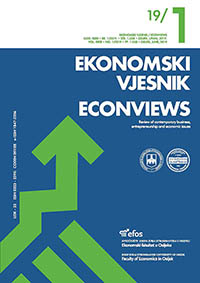Implications of the new accounting model for leases
Implications of the new accounting model for leases
Author(s): Ivan Čevizović, Ivo MijočSubject(s): Accounting - Business Administration
Published by: Sveučilište Josipa Jurja Strossmayera u Osijeku, Ekonomski fakultet u Osijeku
Keywords: lease; operating; financial; IFRS 16; present value; discounting;
Summary/Abstract: Leases often appear to be a practical way of securing some property. The advantage of the lease is in easy replacement and minimum engagement of resources for the acquisition of assets. However, sometimes leases, depending on their form, also serve to hide the financing through the so-called “off -balance financing”. With the aim of eliminating these unwanted effects, the IASB has adopted a new standard for leases – the International Financial Reporting Standard 16 Leases. The key change from the previous accounting model for lease recognition is in the financial statements of the lessee. This change results in recognition of lease liabilities for practically all forms of leases. Of course, this also entails recording the appropriate property item of asset in the financial statements. The result of this approach is also significantly different recognition of expenses during rental time, as well as the nature of expense. This applies particularly to operating leases that do not recognize assets and liabilities in the existing model, and the effect on profit and loss is based on a linear model that most often corresponds to the contractual lease payment dynamics. In this paper the authors research the implication of the new accounting model for leases on financial statements.
- Issue Year: 32/2019
- Issue No: 1
- Page Range: 195-207
- Page Count: 13
- Language: English

